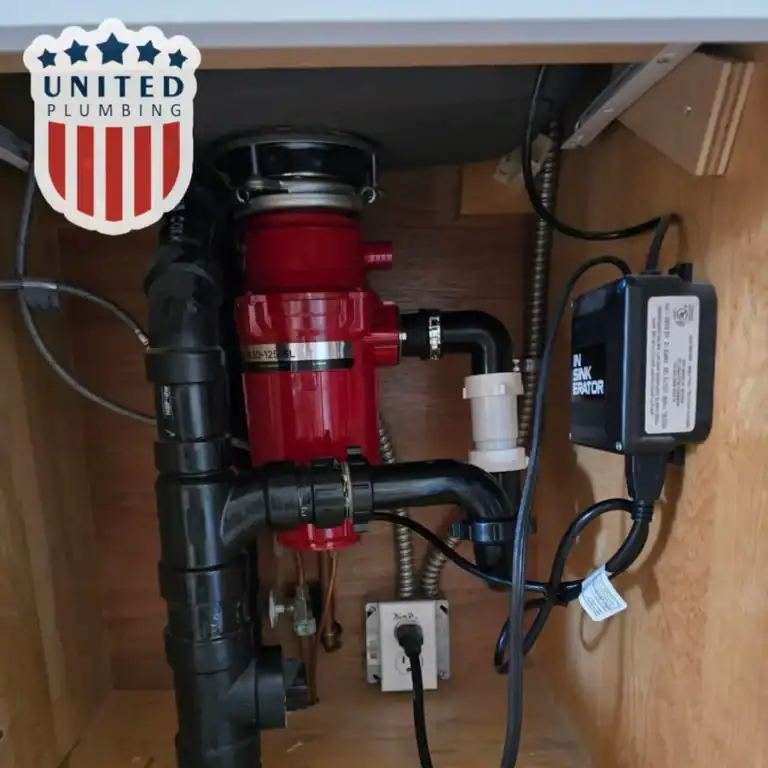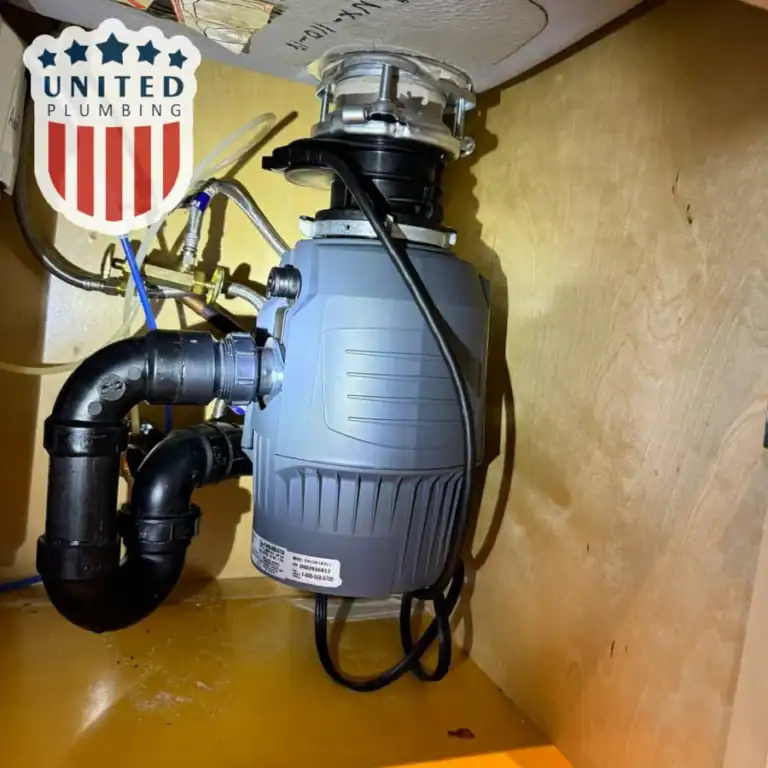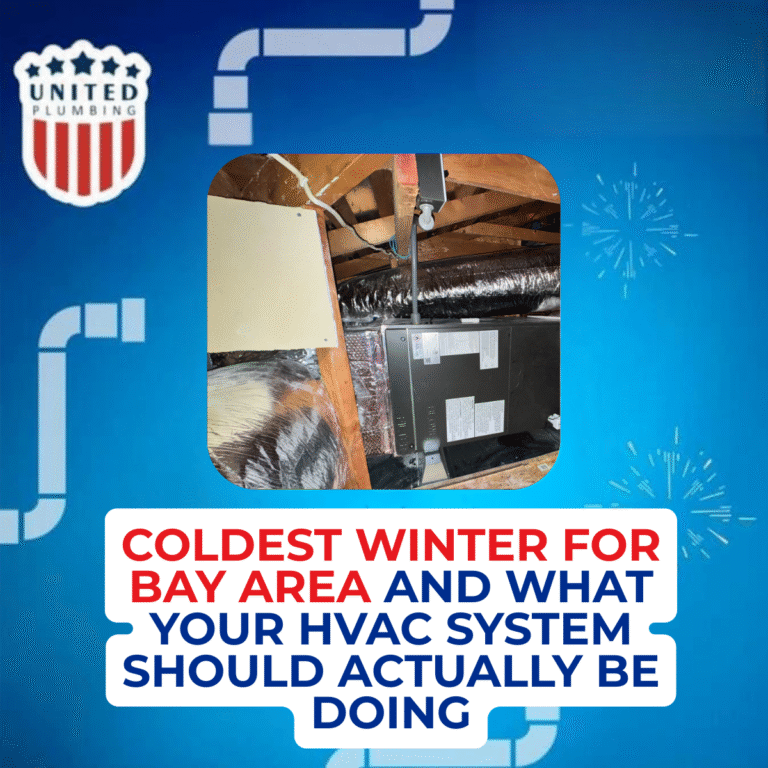FIVE-STAR TEAM WARRANTY &
SAME-DAY SERVICE
Best Garbage Disposal
Your kitchen sink backs up during the worst possible moment—hosting weekend guests with nowhere else to scrape dirty plates. The garbage disposal makes horrible grinding noises before dying completely, leaving everyone staring at a sink full of nasty food water. This happens because most folks buy the cheapest unit at the hardware store without thinking about what their kitchen actually needs.
Shopping for garbage disposal units feels like wandering through a maze of confusing specs and pushy salespeople. Every brand claims their model changes everything, but here’s the reality: most work fine if you pick the right size and don’t treat them like commercial restaurant equipment. The problem starts when people grab whatever costs least or believe sales pitches about needing industrial-strength units for normal homes.
The best garbage disposal matches your household’s actual food habits without breaking down every few months. Professional repair techs see identical mistakes repeatedly—families either go super cheap or get convinced they need restaurant-grade monsters for basic kitchen cleanup. Smart shopping means understanding what you really use versus what sounds impressive.
Your cooking frequency and family size matter way more than fancy marketing claims when choosing equipment that gets used twice daily for years. A household generating lots of fresh meal scraps needs different equipment than folks surviving on frozen dinners and takeout containers.

What Is the Best Garbage Disposal
Figuring out what is the best garbage disposal starts with brutal honesty about cooking habits and food waste patterns. Most households either way overestimate their needs or completely ignore usage realities.
Small households surviving on microwave meals don’t need half-horsepower beasts designed for commercial kitchens. A basic 1/3 HP unit handles occasional apple cores and coffee grounds without exceeding budgets or requiring electrical work that costs more than the disposal.
Big families cooking from scratch daily create substantial food waste that kills weak disposals fast. Constant potato peels, chicken bones, and vegetable scraps from meal prep demand motors that won’t struggle with normal kitchen waste or need weekly unclogging sessions.
Kitchen design affects everything more than motor power. Open floor plans where cooking areas connect to living rooms need quiet operation, or nobody will use the thing during normal hours. Traditional kitchens with solid doors can handle noisier units without waking sleeping kids upstairs.
Older houses create headaches. Homes built before 1980 often lack electrical capacity for high-powered units, requiring panel upgrades costing thousands. Ancient pipes might back up constantly with increased waste volume from disposal usage.
Some cities ban disposals completely because sewage plants can’t handle extra organic waste. Others require permits or professional installation only. Check local rules before buying anything or risk purchasing equipment that can’t be legally installed.
Hard water destroys metal parts faster than most people realize. Areas with mineral-heavy water need stainless steel construction despite higher costs. Cheap galvanized units rust out quickly in hard water conditions.
Types of Garbage Disposals to Consider
Two basic designs dominate home kitchens, each working completely differently with obvious pros and hidden problems.
Continuous Feed Garbage Disposals
Most American homes have continuous feed models because they’re convenient and cheap to install. Flip the wall switch and start grinding—no special steps needed.
Convenience wins here. Rinse plates into the running disposal, add scraps while cooking, operate everything one-handed during dinner cleanup. This makes meal preparation way faster during busy periods.
Installation stays simple using standard wiring and mounting parts. Most homeowners can replace old units without calling electricians or buying special components.
Cost keeps these popular. Basic models start around one hundred bucks, decent ones rarely hit five hundred. Hard to argue with that pricing for essential kitchen equipment.
But safety issues exist. Kids stick things down drains, adults get careless during rushed cleanup. Modern units have safety switches, but accidents happen when people stop paying attention.
Noise becomes a real problem since nothing muffles grinding sounds. Matters a lot in open kitchens where noise carries to living areas and disturbs family activities.
People overuse these because they’re so convenient. Running longer than necessary wastes water and electricity while wearing motors out faster than designed.
Batch Feed Garbage Disposals
Batch feed units need special covers to work. Motors won’t start until covers are installed and locked properly.
Safety is the main selling point. Can’t run with the grinding chamber exposed, preventing accidental contact with moving parts. Great for homes with small kids who put everything in their mouths.
Noise reduction comes from covers containing grinding sounds inside sealed chambers. Much quieter than open continuous feed units during operation.
Controlled use prevents jams since you must stop to add more waste. This pacing helps motors last longer by avoiding overload situations that burn them out.
Water conservation happens naturally because people can’t leave these running like they do with continuous feed models.
Installation costs way more though. Special covers and drain parts add two to three hundred dollars versus standard setups.
Convenience suffers because you can’t add waste while running. Slows cleanup and requires planning during food prep activities.
Limited capacity means multiple cycles for big jobs, making these less practical for large families generating lots of waste.
Top Features of the Best Garbage Disposal Units
Skip marketing nonsense and focus on stuff that actually affects daily use and long-term reliability.
Grinding Power and Motor Size
Horsepower sounds impressive but doesn’t tell the whole story. Well-built half-horse motors often outperform cheap three-quarter horse units because engineering quality beats raw power specs.
Grinding chamber design matters as much as motor strength. Multi-stage systems chop waste more thoroughly than basic designs, preventing clogs while improving efficiency.
Torque specs matter more than horsepower for tough waste like bones and stringy vegetables. High-torque motors power through difficult stuff that stalls high-speed alternatives.
Overload protection saves expensive repairs when jams happen. Good units reset automatically after clearing problems instead of burning up motors that cost more to replace.
Noise Level and Insulation
Sound control determines whether you’ll actually use the thing or avoid it because of noise complaints from family members.
Chamber insulation wraps grinding areas with sound-absorbing materials that reduce vibration transmission to sinks and cabinets. Makes the biggest difference in perceived noise levels.
Anti-vibration mounts isolate motors from sink connections, preventing noise transmission through plumbing. Works especially well with steel sinks that amplify everything.
Motor design influences noise production. Some manufacturers tune speeds for quieter operation, though slower generally means quieter regardless of other factors.
Decibel ratings help compare models, but real performance varies based on sink type and installation quality. Steel sinks make everything louder than cast iron alternatives.

Build Quality and Stainless Steel Components
Construction materials determine whether your disposal lasts five years or fifteen under normal household abuse.
Stainless steel grinding chambers resist rust and handle acidic foods better than cheap galvanized metal. Also maintains sharp surfaces longer without developing rough spots.
Hardened steel grinding parts keep edges sharp while resisting wear from bones and tough waste. Quality components cost more upfront but save money through longer service life.
Motor housing affects durability and noise. Cast iron dampens vibration better than plastic while lasting longer under heavy use conditions.
Warranty coverage shows manufacturer confidence. The best home garbage disposal units include decent warranties on motors and grinding parts, not just ninety-day junk coverage.
Best Garbage Disposal Brands on the Market
Some companies consistently build reliable units, while others cut corners, hoping you won’t notice until warranties expire.
Top Models for Quiet Operation
InSinkErator’s Evolution series really stands out with its quiet disposal tech that actually lives up to the hype. The Evolution Compact is perfect for smaller households, while the Evolution Excel is great for larger families and keeps the noise to a minimum.
The Waste King Legend series offers good noise control at reasonable prices. The L-8000 gives you one horsepower for grinding while keeping the noise down, which is great for open kitchens.
The Moen GX series has sound seal tech that really cuts the noise, not just claims to. The GX50C works well without being too loud.
KitchenAid also keeps their appliances quiet by using steel and insulation, so they’re powerful enough for daily use but manage to keep the noise low.

Most Durable Garbage Disposals
The InSinkErator Badger series is a solid choice for those looking for dependable performance without breaking the bank. They’re not the quietest option, but they can last for years with little upkeep if used normally.
Waste King commercial models are tough enough to handle heavy home use thanks to their industrial-strength parts. Their strong motors and steel build make them worth the extra cost because they’re built to last.
The Moen Host series is well-made and comes with lifetime warranties on the motors. While they might cost more upfront, they save you money in the long run because they last a long time.
General Electric provides good performance for a reasonable price. Their basic models might not have a lot of extras, but they work well for homes that don’t need a ton of features.
Budget-Friendly Garbage Disposals
The InSinkErator Badger 5 is a great choice if you’re looking to save some cash while dealing with kitchen waste. It might not have all the bells and whistles, but it’s reliable enough for homeowners on a budget.
The Waste King L-1001 gives you half a horsepower and is priced well. It’s ideal for smaller homes and has a simple design that keeps things affordable and easy to maintain.
The Moen GX40C performs nicely without the high-end extras. It’s well-built and priced just right for day-to-day use.
Amazon Basics is spot on for anyone who needs a budget option or something temporary. It doesn’t have as many features because of the lower price, but it handles light tasks just fine.
How to Choose the Right Garbage Disposal for Your Kitchen
Start with realistic assessment of actual cooking and cleanup habits over several weeks. Don’t guess—actually watch food waste patterns and usage frequency.
Consider physical constraints including sink type, cabinet space, and electrical service. Some powerful appliances might need electrical upgrades or might not fit under smaller sinks typically found in tight kitchens.
It’s also a good idea to consider how much noise your kitchen can handle based on its location and what time of day your family is around. Open kitchens usually need to be quieter since there are no doors to keep the noise in.
Also, think about the water quality and the kinds of waste your cooking creates. If you have hard water, go for stainless steel. If you have a lot of bones in your trash, you’ll need a more powerful motor.
Also, remember to factor in installation costs and any additional electrical work in your budget. Hiring a pro for installation makes sure everything runs smoothly and keeps your warranty valid while following local codes.
Building codes affect installation requirements in many areas. Some jurisdictions require permits for new installations, others mandate professional electrical work for high-powered units.
Think about future changes too. If you’re expanding your family or changing your lifestyle, you might end up creating a bit more waste, so getting slightly bigger units can be a good long-term choice.
When it feels like there are too many options or the tech stuff gets tricky, it’s a good idea to get some expert advice. United HVAC, Plumbing & Electrical can give you straightforward evaluations and help with the installation, so you can count on things working well.
Conclusion
Picking the right garbage disposal isn’t just about the top reviews. It really comes down to what works for your home and how often you’ll use it. If you want a quieter one, take a look at the InSinkErator Evolution models. Waste King gives you a lot of power for the price, while Moen offers solid choices that sit in between.
Don’t just zero in on the brand; getting it installed by a pro is super important for keeping your disposal running well over time. A good unit can last ages if it’s installed right and used properly, instead of being overworked.
Take your time making this decision. Avoid the cheapest option or specs that just sound impressive. Think about how you’ll use it, your kitchen space, and what will be worth it in the long run.
A decent garbage disposal from a reliable brand can really simplify your life, as long as it meets your needs and you take care of it. Cheaper models might seem like a good deal at first, but they could cost you more down the line with repairs or replacing them quicker than you’d like.
If you’re looking to manage food waste more effectively and simplify cleanup, check out United HVAC, Plumbing & Electrical. Our team will help you pick the right disposal system for your home and ensure it’s set up properly.

Post views: 787
FAQ
What is the best garbage disposal for small households?
A 1/3 to 1/2 HP continuous feed model is great for 1-2 people. They manage regular food waste nicely without being too loud or expensive and fit in standard sinks.
Are quiet garbage disposals worth the cost?
Quiet models cost about $100 to $200 more, but they really cut down on noise, which is great for open kitchens. This extra cost is worth it for a better experience and less disturbance at home.
How often should I replace my garbage disposal?
Good units can last anywhere from 8 to 15 years if you take care of them. You should think about replacing them if they start getting jammed a lot, aren’t working as well as before, or if the repairs cost more than getting a new one.
Can I install a garbage disposal myself?
If you’re just replacing an old disposal, you can likely handle it on your own if you have some basic skills. But if you’re putting in something new and it needs any electrical work, it’s a good idea to get a pro to do it. That way, you keep things safe and your warranty stays intact.
Latest posts

Coldest winter for Bay Area in 2025 And What Your HVAC System Should Actually Be Doing
If your home feels colder than usual this winter, you’re not imagining it. Bay Area home heating systems are being...

Prevent Clogged Faucets: 10 Tips for Homeowners in 2025
Clogged faucets are one of the most common service calls we handle in California homes, and the good news is that...


If you still have questions or need advice, please leave a request and we will contact you as soon as possible
Need a plumber and got no clue where to start?
(408) 539-6936Facing a plumbing issue? Get a FREE in-person estimate and quick solutions from our skilled technicians, ensuring your home runs smoothly again!
